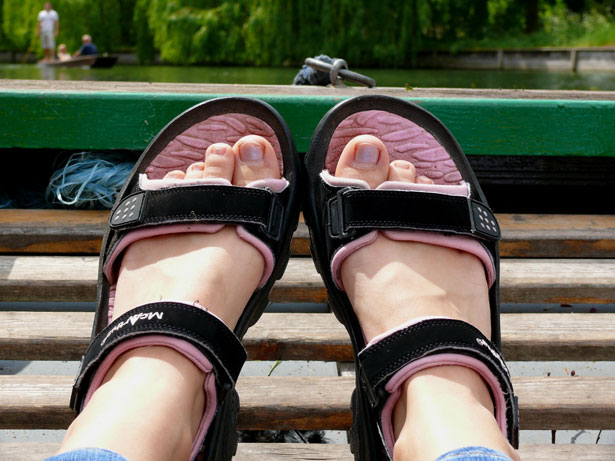When to Consult a Podiatrist?
The podiatrist has a paramedical function – he/she treats the foot and its deformities.
He provides care for foot or toenail conditions, on medical prescription. He is also entitled to provide non-prescription care, but they are not reimbursed by Social Security.
The profession of podiatrist has two aspects:

- pedicure care;
- podiatry care.
Note: the pedicure-podiatrist may be called upon to intervene in many areas (e. g. sport), particularly during the necessary monitoring of certain high-risk athletes.
Pedicure Care
The pedicure-podologist is responsible for monitoring superficial foot problems, this is the part called pedicure. He must then diagnose and treat all skin disorders as:
- horns and calluses;
- fungal infections;
- warts.
Podiatry Care
The podologist can also treat more serious pathologies and foot deformities:
whether they are of hereditary origins such as clubfoot or hollow feet;
that they appear following an accident such as hallux rigidus;
whether they have developed due to poor posture or the wearing of unsuitable shoes such as claw toes.
To remedy these conditions, the podiatrist has several solutions:
- manufacture of plantar orthotics or orthopaedic shoes;
- the installation of foot splints or night restraints;
- nail straightening (or orthonyxia) and repair with onychoplasty.

Main Category of People Who Are Concerned
The podiatrist works with a diverse audience. However, foot monitoring should be more regular in:
- diabetics, whose foot disorders can lead to disabling complications;
- arteritics, for the same reasons,
- athletes;
- the elderly;
- young children
When to Consult a Podiatrist?
Don’t wait until it hurts to push the door of a podiatrist! The appearance of discomfort during walking should automatically lead you to consult one. He will thus be able to prevent the arrival of corns, ingrown nails or deformities.
As a preventive measure, it is advisable to consult a podiatrist at least once a year, even if you do not feel any discomfort or pain. The podiatrist will thus be able to detect the slightest problem beforehand.
Note: Children and teenagers spend more time running and playing around and they are more prone to foot-related injuries. Therefore, it is advisable to visit a podiatrist twice a year. You can bring your children at any age, even baby. If you are in Melbourne, My Podiatrist is a good clinic offering a broad range of innovative foot care options such as Shockwave Therapy, Laser Acupuncture, Physiotherapy, PACT Fungal Nail Therapy, Myotherapy massage, amongst others.




Thank you for mentioning things like warts and calluses as things podiatrists can treat. I’ve been growing these sore spots on my feet recently, and I soon realized that they might be growing into something even worse if I don’t get treatment soon. I’ll act quickly and find a podiatrist I can visit so they can tell me how to get rid of these sore spots.
I love how you explained that consulting a podiatrist could help you experience relief from your foot pain. My colleague talked about how she’s having a hard time standing lately because of a painful sensation in her foot. I’ll probably recommend that she find a reputable and trusted podiatrist if this problem persists.